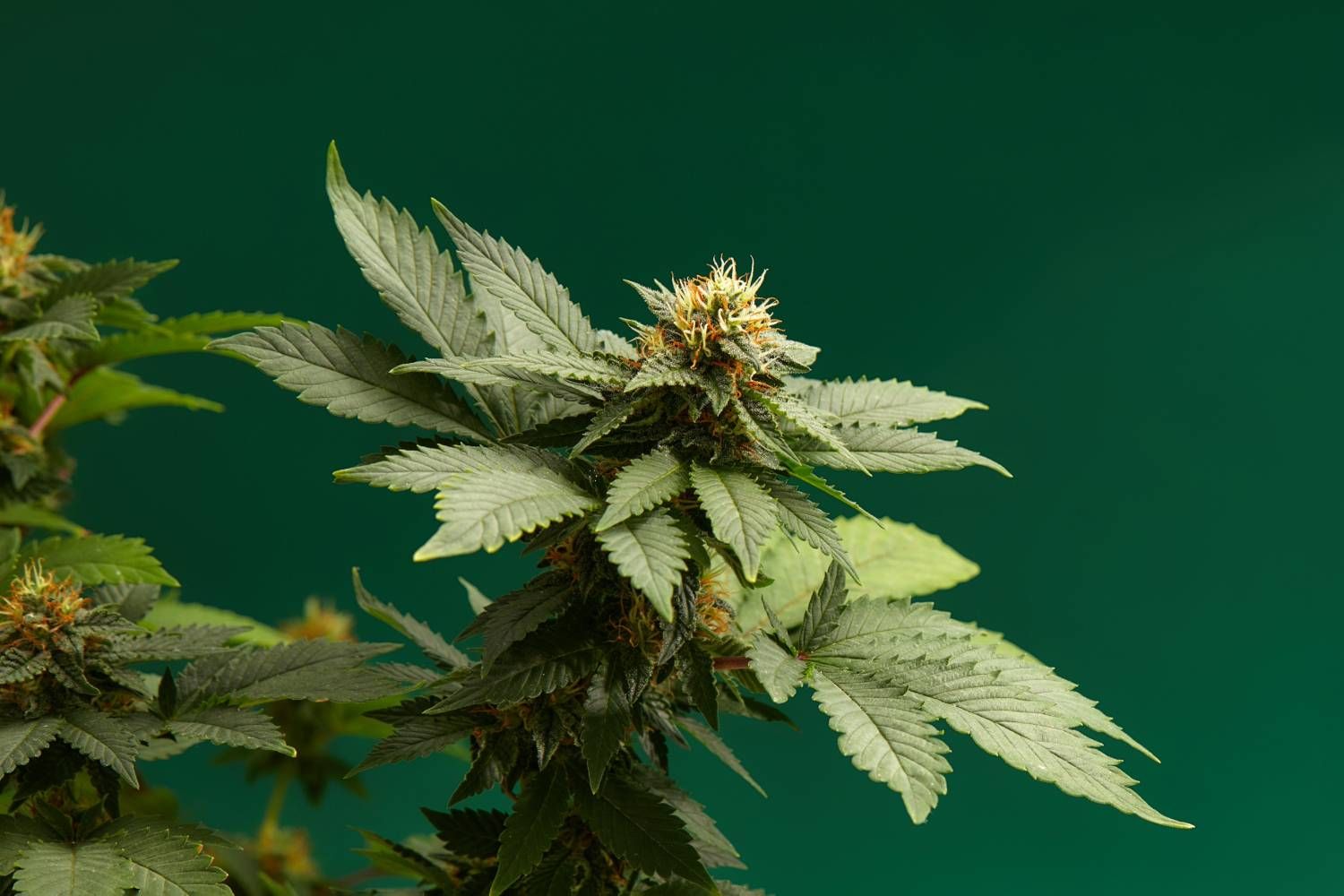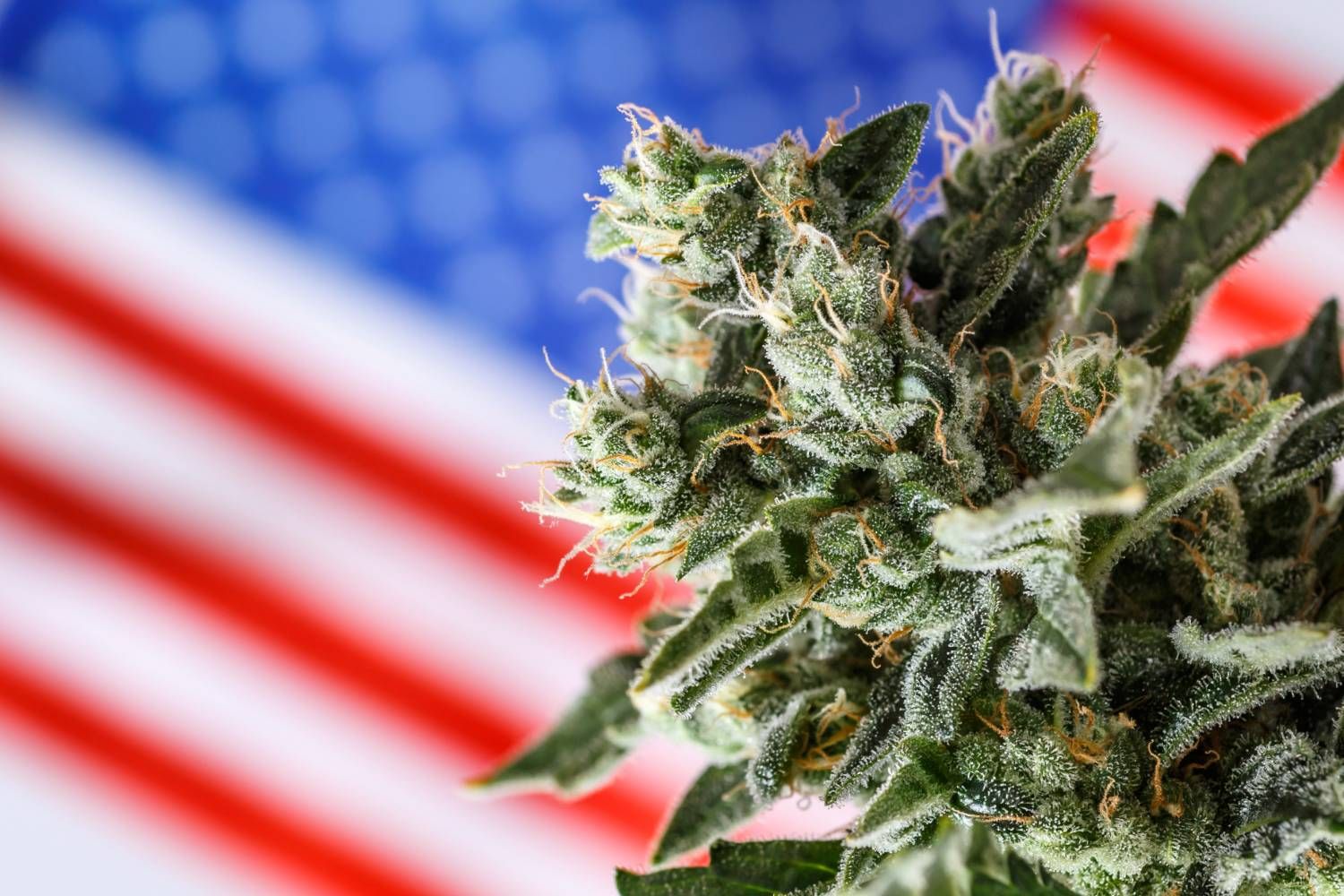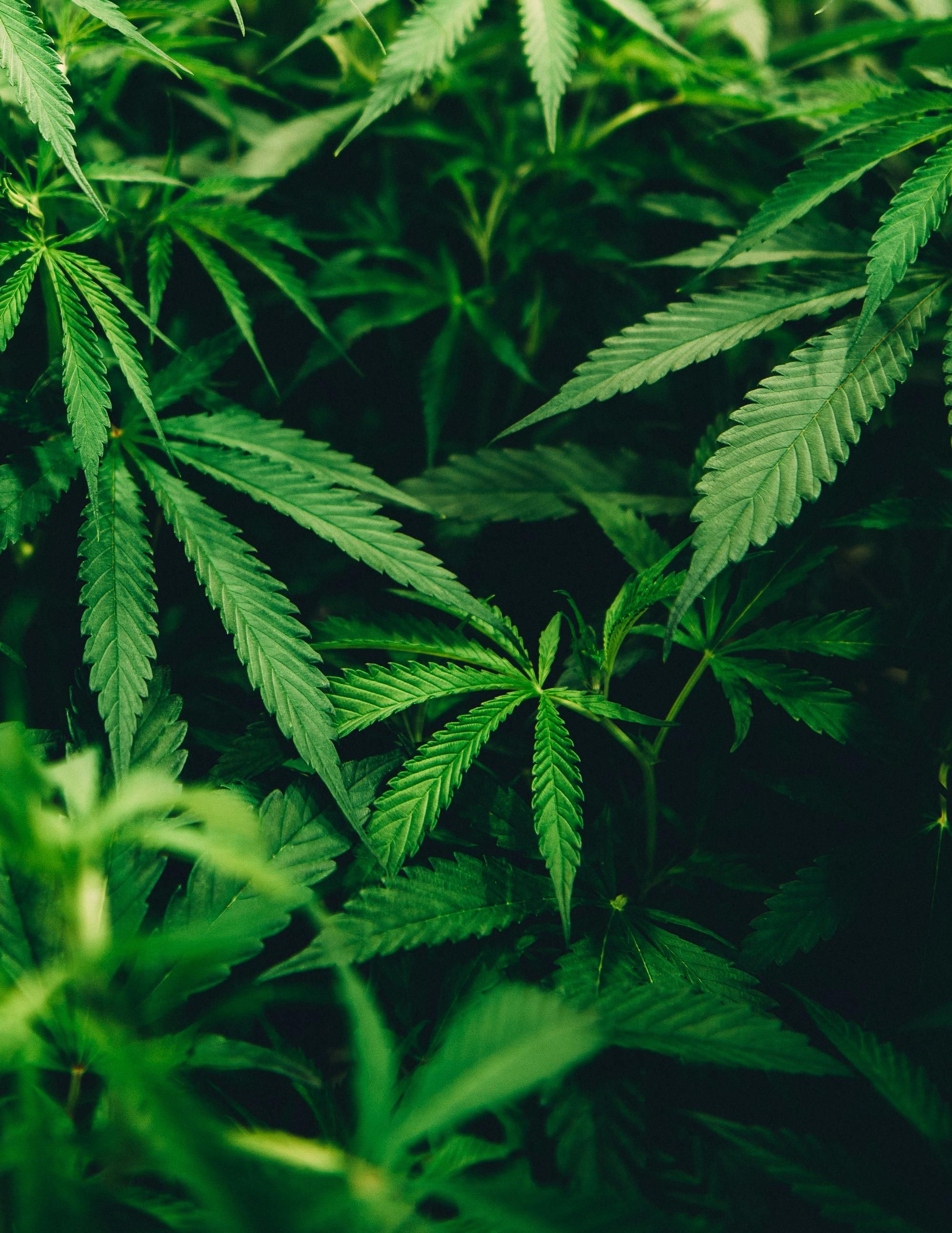Q1 revenue of $19.1 million increased 22.1% YoY and 30.5% excluding discontinued operations –
– Cost controls and operational improvements drive second consecutive quarter of positive income from operations –
MINNEAPOLIS, May 15, 2023 (GLOBE NEWSWIRE) -- Goodness Growth Holdings, Inc. ("Goodness Growth" or the "Company") (CSE: GDNS; OTCQX: GDNSF), a cannabis company committed to providing safe access, quality products and great value to its customers, today reported financial results for its first quarter ended March 31, 2023. Key financial results are presented below in summary form with supporting commentary and discussion from management of certain key operating metrics which the Company uses to judge its operating performance. The Company's financial statements and management discussion and analysis for the quarter ended March 31, 2023, will be filed on Form 10-Q with the U.S. Securities and Exchange Commission and on SEDAR at www.sedar.com later today. All currency figures referenced in this press are denominated in U.S. dollars.
| Summary of Key Financial Metrics | ||||||||||
| Three Months Ended | ||||||||||
| US $ in millions | March 31, | |||||||||
| 2023 | 2022 | Variance | ||||||||
| GAAP Revenue | $ | 19.1 | $ | 15.6 | 22.1 | % | ||||
| Revenue (excluding discontinued operations) | $ | 19.1 | $ | 14.6 | 30.5 | % | ||||
| GAAP Gross Profit | $ | 9.5 | $ | 2.5 | 280.0 | % | ||||
| Gross Profit Margin | 49.9 | % | 15.9 | % | 3,400 bps | |||||
| SG&A Expenses | $ | 7.2 | $ | 9.3 | -22.6 | % | ||||
| SG&A Expenses (% of Sales) | 37.7 | % | 59.6 | % | -2,190 bps | |||||
| Operating Income (Loss) | $ | 0.4 | $ | (7.8 | ) | NM | ||||
| Operating Income Margin | 1.9 | % | (49.7 | %) | 5,170 bps | |||||
| EBITDA | $ | 1.4 | $ | (10.7 | ) | NM | ||||
| EBITDA Margin | 7.6 | % | (68.4 | %) | 7,600 bps | |||||
Management Commentary
Interim Chief Executive Officer Josh Rosen commented, "Our first quarter results demonstrate a continuation of the trends we discussed last quarter, with revenue growth in each of our core markets and gross margin performance that has stabilized since the wind down of our former outdoor operations in Arizona. Fundamentally, our strategy this year aims to produce better and more affordable products for patients and consumers in Maryland, Minnesota, and New York, and we believe we are off to a solid start toward achieving these goals. We were also pleased to close on a new $10 million convertible loan facility earlier this month. Although access to capital remains challenging and expensive for cannabis operators, this loan provides us flexibility to execute our plans for the year, which rest upon delivering meaningful operational improvements, driving quality and efficiency within our cultivation and manufacturing facilities, with a priority on being prepared for adult-use transitions in our core markets."
Amber Shimpa, President and CEO of Vireo Health of Minnesota commented, "Our recent efforts to empower our state-level teams with a more product-driven, decentralized culture were evident in our gross margin performance during the first quarter. We anticipated stronger operating efficiency following our reorganization initiatives, and SG&A expenses also declined sequentially as we expected compared to the fourth quarter of last year. Most importantly, however, was evidence of our progress in improving our harvest yields with more premium "A" flower, which improved both sequentially and year-over-year. Continued success with these initiatives will be critical in order for us to achieve our goals for the year, and as we discussed last quarter, we will continue to provide transparency into these key metrics moving forward so investors can better evaluate the trajectory of our business."
| Core Market KPIs 1 | ||||||||||
| Three Months Ended | ||||||||||
| US $ in millions | March 31, | |||||||||
| 2023 | 2022 | Variance | ||||||||
| Total Harvest Pounds (Biomass) | 7,151 | 5,344 | 33.8 | % | ||||||
| % "A" Flower 2 | 19.2 | % | 14.7 | % | 450 bps | |||||
| Total Retail Revenue | $ | 15.4 | $ | 11.5 | 34.2 | % | ||||
| Same Store Sales Growth | - | - | 34.0 | % | ||||||
| Number of Stores in SSS Calculation | 14 | - | - | |||||||
| Total Wholesale Revenue | $ | 2.6 | $ | 2.2 | 18.1 | % | ||||
| 1 Core Markets refer to the Company's operations in Maryland, Minnesota, and New York. | ||||||||||
| 2 "A Flower" refers to produced biomass that meet the Company's highest internal standards for flower quality, size, and appearance. | ||||||||||
Other Events
On February 14, 2023, the Company announced the reorganization of its management team to promote a more decentralized organizational structure and empower state-level operating teams with greater flexibility. Josh Rosen was promoted to the role of Chief Executive Officer on an interim basis; Amber Shimpa was promoted to the role of President and CEO of subsidiary Vireo Health of Minnesota; and Company founder, Dr. Kyle Kingsley, assumed the role of Executive Chairman.
On March 31, 2023, the Company announced that it executed a fifth amendment to its credit facility with its senior secured lender, Green Ivy, an affiliate of Chicago Atlantic. The fifth amendment to the Company's credit facility reduces cash outlays through the removal of a required amortization schedule and extended the maturity date on the credit facility loans to April 30, 2024, with opportunities for performance-based extensions. The Company expects to issue up to 15,000,000 subordinate voting shares of the Company to the lenders in consideration for the credit facility amendment.
On April 28, 2023, the Company closed on a U.S. $2.0 million tranche of a new convertible debt facility, which enables the Company to access up to U.S. $10.0 million in aggregate principal of convertible notes. The convertible loan has a term of three years and an annual interest rate of 12.0 percent, including 6.0 percent cash and 6.0 percent paid-in-kind. The initial tranche's principal amount of convertible notes outstanding, plus all paid-in-kind interest and all other accrued but unpaid interest thereunder, is convertible into subordinate voting shares of the Company at the option of the holders at any time by written notice to the Company, at a conversion price equal to U.S. $0.145. In connection with this financing, the Company issued 6,250,000 warrants to purchase subordinate voting shares of the Company to the lenders. The warrants have a term of five years with a strike price of U.S. $0.145.
Balance Sheet and Liquidity
As of March 31, 2023, total current assets were $115.2 million, including cash on hand of $10.3 million, which does not include $1.7 million in net proceeds related to the Company's recently closed convertible loan facility. Total current liabilities were $96.4 million.
As of May 1, 2023, following the closing of the convertible loan facility, the Company had a total of 141,143,954 equity shares issued and outstanding on an as-converted basis, 196,043,572 shares outstanding on an as-converted, fully diluted basis, and 154,770,285 fully-diluted shares on the treasury method basis.
Conference Call and Webcast Information
Goodness Growth management will host a conference call with research analysts today, May 15, 2023, at 4:30 p.m. ET (3:30 p.m. CT) to discuss its financial results for its first quarter ended March 31, 2023. Interested parties may attend the conference call by dialing 1-888-414-4585 (Toll-Free) (US and Canada) or 1-646-960-0331 (Toll) (International) and referencing conference ID number 8663261.
A live audio webcast of this event will also be available in the Events & Presentations section of the Company's Investor Relations website and via the following link:
https://events.q4inc.com/attendee/780753746 .
About Goodness Growth Holdings, Inc.
Goodness Growth Holdings, Inc. is a cannabis company whose mission is to provide safe access, quality products and value to its customers while supporting its local communities through active participation and restorative justice programs. The Company is evolving with the industry and is in the midst of a transformation to being significantly more customer-centric across its operations, which include cultivation, manufacturing, wholesale and retail business lines. Today, the Company is licensed to grow, process, and/or distribute cannabis in five markets and operates 18 dispensaries in four states. For more information about Goodness Growth Holdings, please visit www.goodnessgrowth.com .
Additional Information
Additional information relating to the Company's first quarter 2023 results will be available on EDGAR and SEDAR by tomorrow. Goodness Growth refers to certain non-GAAP financial measures such as Earnings Before Interest, Taxes, Depreciation and Amortization (EBITDA) in circumstances in which the Company believes that doing so provides additional perspective and insights when analyzing the core operating performance of the business. These measures do not have any standardized meaning and may not be comparable to similar measures presented by other issuers. Please see the Supplemental Information and Reconciliation of Non-GAAP Financial Measures at the end of this news release for more detailed information regarding non-GAAP financial measures.
Contact Information
| Investor Inquiries: Sam Gibbons Chief of Staff, VP Investor Relations samgibbons@goodnessgrowth.com (612) 314-8995 | Media Inquiries: Amanda Hutcheson Senior Manager, Communications amandahutcheson@goodnessgrowth.com (919) 815-1476 | |
Forward-Looking Statement Disclosure
This press release contains "forward-looking information" within the meaning of applicable United States and Canadian securities legislation. To the extent any forward-looking information in this press release constitutes "financial outlooks" within the meaning of applicable United States or Canadian securities laws, this information is being provided as preliminary financial results; the reader is cautioned that this information may not be appropriate for any other purpose and the reader should not place undue reliance on such financial outlooks. Forward-looking information contained in this press release may be identified by the use of words such as "should," "believe," "estimate," "would," "looking forward," "may," "continue," "expect," "expected," "will," "believe," "subject to," and "pending," variations of such words and phrases, or any statements or clauses containing verbs in any future tense. These statements should not be read as guarantees of future performance or results. Forward-looking information includes both known and unknown risks, uncertainties, and other factors which may cause the actual results, performance, or achievements of the Company or its subsidiaries to be materially different from any future results, performance, or achievements expressed or implied by the forward-looking statements or information contained in this press release. Financial outlooks, as with forward-looking information generally, are, without limitation, based on the assumptions and subject to various risks as set out herein and in our Annual Report on Form 10-K filed with the Securities Exchange Commission. Our actual financial position and results of operations may differ materially from management's current expectations and, as a result, our revenue, EBITDA, and cash on hand may differ materially from the values provided in this press release. Forward-looking information is based upon a number of estimates and assumptions of management, believed but not certain to be reasonable, in light of management's experience and perception of trends, current conditions, and expected developments, as well as other factors relevant in the circumstances, including assumptions in respect of current and future market conditions, the current and future regulatory environment, and the availability of licenses, approvals and permits.
Although the Company believes that the expectations and assumptions on which such forward-looking information is based are reasonable, the reader should not place undue reliance on the forward-looking information because the Company can give no assurance that they will prove to be correct. Actual results and developments may differ materially from those contemplated by these statements. Forward-looking information is subject to a variety of risks and uncertainties that could cause actual events or results to differ materially from those projected in the forward-looking information. Such risks and uncertainties include, but are not limited to: risks related to the timing and content of adult-use legislation in markets where the Company currently operates; current and future market conditions, including the market price of the subordinate voting shares of the Company; risks related to epidemics and pandemics; federal, state, local, and foreign government laws, rules, and regulations, including federal and state laws and regulations in the United States relating to cannabis operations in the United States and any changes to such laws or regulations; operational, regulatory and other risks; execution of business strategy; management of growth; difficulties inherent in forecasting future events; conflicts of interest; risks inherent in an agricultural business; risks inherent in a manufacturing business; liquidity and the ability of the Company to raise additional financing to continue as a going concern;; the Company's ability to meet the demand for flower in Minnesota; risk of failure in the lawsuit with Verano and the cost of that litigation; our ability to dispose of our assets held for sale at an acceptable price or at all; and risk factors set out in the Company's Annual Report on Form 10-K for the year ended December 31, 2022, which is available on EDGAR with the U.S. Securities and Exchange Commission and filed with the Canadian securities regulators and available under the Company's profile on SEDAR at www.sedar.com .
The statements in this press release are made as of the date of this release. Except as required by law, we undertake no obligation to update any forward-looking statements or forward-looking information to reflect events or circumstances after the date of such statements.
Supplemental Information
The financial information reported in this news release is based on unaudited financial statements for the fiscal quarters ended March 31, 2023, and March 31, 2022. All financial information contained in this news release is qualified in its entirety with reference to such financial statements. To the extent that the financial information contained in this news release is inconsistent with the information contained in the Company's audited financial statements, the financial information contained in this news release shall be deemed to be modified or superseded by the Company's audited financial statements. The making of a modifying or superseding statement shall not be deemed an admission for any purposes that the modified or superseded statement, when made, constituted a misrepresentation for purposes of applicable securities laws.
GOODNESS GROWTH HOLDINGS, INC.
CONSOLIDATED BALANCE SHEETS AS OF 3/31/2023 AND 12/31/2022
(Amounts Expressed in United States Dollars, Unaudited and Condensed)
| March 31, | December 31, | |||||||
| 2023 | 2022 | |||||||
| Assets | ||||||||
| Current assets: | ||||||||
| Cash | $ | 10,345,599 | $ | 15,149,333 | ||||
| Accounts receivable, net of allowance for doubtful accounts of $473,856 and $453,860, respectively | 4,261,624 | 4,286,072 | ||||||
| Inventory | 21,852,027 | 20,508,023 | ||||||
| Prepayments and other current assets | 2,030,630 | 2,544,532 | ||||||
| Assets Held for Sale | 77,067,479 | 4,240,781 | ||||||
| Total current assets | 115,557,359 | 46,728,741 | ||||||
| Property and equipment, net | 25,750,814 | 89,606,932 | ||||||
| Operating lease, right-of-use asset | 2,789,741 | 6,110,787 | ||||||
| Notes receivable, long-term | 3,750,000 | 3,750,000 | ||||||
| Intangible assets, net | 8,617,180 | 8,776,946 | ||||||
| Goodwill | 183,836 | 183,836 | ||||||
| Deposits | 593,812 | 2,312,161 | ||||||
| Deferred tax assets | 1,390,000 | 1,687,000 | ||||||
| Total assets | $ | 158,632,742 | $ | 159,156,403 | ||||
| Liabilities | ||||||||
| Current liabilities | ||||||||
| Accounts Payable and Accrued liabilities | $ | 15,595,086 | $ | 14,928,780 | ||||
| Long-Term debt, current portion | 3,050,000 | 11,780,000 | ||||||
| Right of use liability | 1,004,046 | 1,680,294 | ||||||
| Liabilities held for sale | 75,525,255 | 1,319,847 | ||||||
| Total current liabilities | 95,174,387 | 29,708,921 | ||||||
| Right-of-use liability | 10,370,395 | 79,757,994 | ||||||
| Long-Term debt | 55,155,615 | 46,248,604 | ||||||
| Total liabilities | $ | 160,700,397 | $ | 155,715,519 | ||||
| Stockholders' equity | ||||||||
| Subordinate Voting Shares ($- par value, unlimited shares authorized; 86,721,030 shares issued and outstanding) | — | — | ||||||
| Multiple Voting Shares ($- par value, unlimited shares authorized; 348,642 shares issued and outstanding) | — | — | ||||||
| Super Voting Shares ($- par value; unlimited shares authorized; 65,411 shares issued and outstanding, respectively) | — | — | ||||||
| Additional Paid in Capital | 184,219,278 | 181,321,847 | ||||||
| Accumulated deficit | (186,286,933 | ) | (177,880,963 | ) | ||||
| Total stockholders' equity | $ | (2,067,655 | ) | $ | 3,440,884 | |||
| Total liabilities and stockholders' equity | $ | 158,632,742 | $ | 159,156,403 | ||||
GOODNESS GROWTH HOLDINGS, INC.
CONSOLIDATED STATEMENTS OF OPERATIONS
THREE MONTHS ENDED MARCH 31, 2023 AND 2022
(Amounts Expressed in United States Dollars, Unaudited and Condensed)
| Three Months Ended | |||||||
| March 31, | |||||||
| 2023 | 2022 | ||||||
| Revenue | $ | 19,088,423 | $ | 15,638,572 | |||
| Cost of sales | |||||||
| Product costs | 9,578,211 | 9,682,977 | |||||
| Inventory valuation adjustments | (10,000 | ) | 3,466,917 | ||||
| Gross profit | 9,520,212 | 2,488,678 | |||||
| Operating expenses: | |||||||
| Selling, general and administrative | 7,156,835 | 9,277,969 | |||||
| Stock-based compensation expenses | 1,675,594 | 642,506 | |||||
| Depreciation | 159,511 | 156,096 | |||||
| Amortization | 159,766 | 172,267 | |||||
| Total operating expenses | 9,151,706 | 10,248,838 | |||||
| Gain (loss) from operations | 368,506 | (7,760,160 | ) | ||||
| Other income (expense): | |||||||
| Impairment of long-lived assets | — | (5,313,176 | ) | ||||
| Gain on disposal of assets | — | 168,359 | |||||
| Interest expenses, net | (7,134,789 | ) | (4,601,799 | ) | |||
| Other income (expenses) | 22,313 | 1,199,994 | |||||
| Other income (expenses), net | (7,112,476 | ) | (8,546,622 | ) | |||
| Loss before income taxes | (6,743,970 | ) | (16,306,782 | ) | |||
| Current income tax expenses | (1,725,000 | ) | (1,375,000 | ) | |||
| Deferred income tax recoveries | 63,000 | 3,115,000 | |||||
| Net loss and comprehensive loss | (8,405,970 | ) | (14,566,782 | ) | |||
| Net loss per share - basic and diluted | $ | (0.07 | ) | $ | (0.11 | ) | |
| Weighted average shares used in computation of net loss per share - basic & diluted | 128,126,330 | 128,111,328 | |||||
GOODNESS GROWTH HOLDINGS, INC.
CONSOLIDATED STATEMENTS OF CASH FLOWS
THREE MONTHS ENDED MARCH 31, 2023 AND 2022
(Amounts Expressed in United States Dollars, Unaudited and Condensed)
| March 31, | |||||||
| 2023 | 2022 | ||||||
| CASH FLOWS FROM OPERATING ACTIVITIES | |||||||
| Net loss | $ | (8,405,970 | ) | $ | (14,566,782 | ) | |
| Adjustments to reconcile net loss to net cash used in operating activities: | |||||||
| Inventory valuation adjustments | (10,000 | ) | 3,466,917 | ||||
| Depreciation | 159,510 | 156,096 | |||||
| Depreciation capitalized into inventory | 734,087 | 700,193 | |||||
| Non-cash operating lease expense | 206,290 | 274,067 | |||||
| Amortization of intangible assets | 159,767 | 172,267 | |||||
| Stock-based payments | 1,675,594 | 642,506 | |||||
| Interest Expense | 1,398,848 | 996,157 | |||||
| Impairment of long-lived assets | — | 5,313,186 | |||||
| Deferred income tax | (63,000 | ) | (3,115,000 | ) | |||
| Accretion | 394,573 | 1,384,812 | |||||
| Gain on Sale of Property and Equipment | — | — | |||||
| Gain on disposal of royalty asset | — | (168,359 | ) | ||||
| Change in operating assets and liabilities: | |||||||
| Accounts Receivable | 24,448 | (1,764,878 | ) | ||||
| Prepaid expenses | 513,902 | (1,877,011 | ) | ||||
| Inventory | (1,230,547 | ) | (1,255,162 | ) | |||
| Accounts payable and accrued liabilities | 666,307 | 2,880,051 | |||||
| Change in assets and liabilities held for sale | (18,767 | ) | — | ||||
| Net cash used in operating activities | $ | (3,794,958 | ) | $ | (6,760,940 | ) | |
| CASH FLOWS FROM INVESTING ACTIVITIES: | |||||||
| PP&E Additions | $ | (197,827 | ) | $ | (2,173,430 | ) | |
| Proceeds from sale of property, plant, and equipment | — | — | |||||
| Proceeds from sale of royalty asset | — | 236,635 | |||||
| Deposits | (522,375 | ) | (276,684 | ) | |||
| Net cash provided by (used in) investing activities | $ | (720,202 | ) | $ | (2,213,479 | ) | |
| CASH FLOWS FROM FINANCING ACTIVITIES | |||||||
| Proceeds from long-term debt, net of issuance costs | $ | — | $ | 2,884,581 | |||
| Lease principal payments | (288,574 | ) | (464,214 | ) | |||
| Net cash provided by financing activities | $ | (288,574 | ) | $ | 2,420,367 | ||
| Net change in cash and restricted cash | $ | (4,803,734 | ) | $ | (6,554,052 | ) | |
| Cash and restricted cash, beginning of period | $ | 15,149,333 | $ | 15,155,279 | |||
| Cash and restricted cash, end of period | $ | 10,345,599 | $ | 8,601,227 | |||
GOODNESS GROWTH HOLDINGS, INC.
STATE-BY-STATE REVENUE PERFORMANCE
THREE MONTHS ENDED MARCH 31, 2023 AND 2022
| Three Months Ended | ||||||||||||||
| March 31, | ||||||||||||||
| 2023 | 2022 | $ Change | % Change | |||||||||||
| Retail: | ||||||||||||||
| MN | $ | 10,718,916 | $ | 6,664,088 | $ | 4,054,830 | 61 | % | ||||||
| NY | 2,361,942 | 2,858,893 | (496,951 | ) | (17 | )% | ||||||||
| NM | 1,052,316 | 923,353 | 128,963 | 14 | % | |||||||||
| MD | 2,338,625 | 1,965,889 | 372,736 | 19 | % | |||||||||
| Total Retail | $ | 16,471,799 | $ | 12,412,223 | $ | 4,059,578 | 33 | % | ||||||
| Wholesale: | ||||||||||||||
| AZ | $ | — | $ | 1,011,063 | $ | (1,011,063 | ) | (100 | )% | |||||
| MD | 1,563,875 | 1,262,588 | 301,287 | 24 | % | |||||||||
| NY | 1,052,749 | 509,238 | 543,511 | 107 | % | |||||||||
| MN | — | 443,460 | (443,460 | ) | 100 | % | ||||||||
| Total Wholesale | $ | 2,616,624 | $ | 3,226,349 | $ | (609,725 | ) | (19 | )% | |||||
| Total Revenue | $ | 19,088,423 | $ | 15,638,572 | $ | 3,449,853 | 22 | % | ||||||
| AZ Revenue | $ | — | $ | (1,011,063 | ) | $ | 1,011,063 | (100 | )% | |||||
| Total Revenue excluding AZ | $ | 19,088,423 | $ | 14,627,509 | $ | 4,460,916 | 30 | % | ||||||
Reconciliation of Non-GAAP Financial Measures
Goodness Growth management occasionally elects to provide certain non-GAAP financial measures such as Earnings Before Interest, Taxes, Depreciation and Amortization (EBITDA). EBITDA is a non-GAAP measure and does not have a standardized definition under GAAP. The following information provides reconciliations of the supplemental non-GAAP financial measures, presented herein to the most directly comparable financial measures calculated and presented in accordance with GAAP. The Company has provided the non-GAAP financial measures, which are not calculated or presented in accordance with GAAP, as supplemental information and in addition to the financial measures that are calculated and presented in accordance with GAAP. These supplemental non-GAAP financial measures should not be considered superior to, as a substitute for or as an alternative to, and should be considered in conjunction with, the GAAP financial measures presented.
Reconciliation of Net Loss to EBITDA
| Three Months Ended | |||||||
| March 31, | |||||||
| 2023 | 2022 | ||||||
| Net income (loss) | $ | (8,405,970 | ) | $ | (14,566,782 | ) | |
| Interest expense, net | 7,134,789 | 4,601,799 | |||||
| Income taxes | 1,662,000 | (1,740,000 | ) | ||||
| Depreciation & Amortization | 319,277 | 328,363 | |||||
| Depreciation included in cost of goods sold | 734,087 | 700,193 | |||||
| EBITDA (non-GAAP) | $ | 1,444,183 | $ | (10,676,427 | ) | ||






